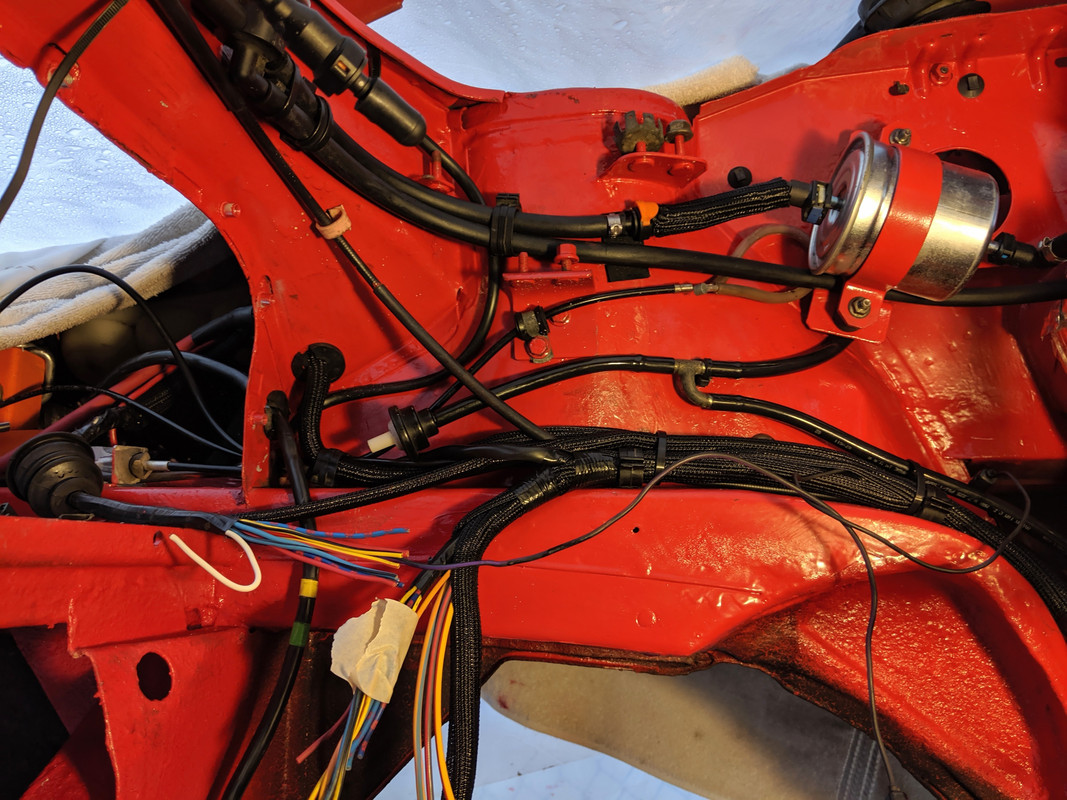Conda
Daily Driver
Hey all, I've been chasing things creating an uneven idle on my 1987 FI X1/9 and one thing i noticed is that charcoal canister has a port on the top that is not connected to anything. With the charcoal canister connected to the intake, there is a noticeable vacuum at the 90 degree elbow on the top of the canister. I replaced the vacuum line going to the charcoal canister with a bolt that then sealed it up. Idle is now consistent but I realize that im probably venting all the fumes that should probably get burned by the engine (if possible).
The next time i fueled it up, i noticed a significant amount of pressure was released when i opened the gas cap, more than I am used to.
My questions are:
1. Should the 90 degree bend pointing to the front of the car be attached to anything or venting? (shop manual for FI seems to show nothing attached, but carb does.)
2. Should the same 90 degree bend have noticable vacuum if you put your thumb over the opening? (is this a symptom of a failed charcoal canister?)
3. Are there any valves on the vapor system? Will not having intake vacuum result in an over pressure situation in the gas tank?
Thanks everyone. I was going to post the image from the manual but i'm not sure if some copyright holder would shred me for it.
(edit: is/are)
The next time i fueled it up, i noticed a significant amount of pressure was released when i opened the gas cap, more than I am used to.
My questions are:
1. Should the 90 degree bend pointing to the front of the car be attached to anything or venting? (shop manual for FI seems to show nothing attached, but carb does.)
2. Should the same 90 degree bend have noticable vacuum if you put your thumb over the opening? (is this a symptom of a failed charcoal canister?)
3. Are there any valves on the vapor system? Will not having intake vacuum result in an over pressure situation in the gas tank?
Thanks everyone. I was going to post the image from the manual but i'm not sure if some copyright holder would shred me for it.
(edit: is/are)


